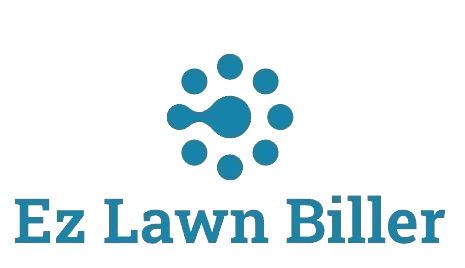Achieving the perfect pricing strategy for your lawn care business can set you apart from competitors and maximize profitability.
Step-by-Step: How to Set Pricing in Your Lawn Business
Setting the right pricing for your lawn care services is critical to your business success. This blog post will guide you through a step-by-step process to establish a pricing strategy that works for your lawn business while ensuring profitability and customer satisfaction. We will cover key factors to consider, offer practical tips, and explore how technology like lawn billing software can streamline your pricing process.
When launching or growing a lawn care business, one of the most significant decisions you must make is how to set your prices. Pricing not only impacts your revenue but also positions your brand in the market. If your prices are too low, you risk undervaluing your services; if they’re too high, you might scare away potential customers. Thus, finding that sweet spot is crucial.
This blog will explore various elements essential for determining effective pricing. We’ll look into cost analysis, competitor pricing, the value you provide, and how to adjust your pricing strategy over time. By the end of this guide, you’ll be equipped with the knowledge and tools to confidently set the right prices for your lawn care services.
Understanding Your Costs
The first step in setting your prices is understanding your costs. This includes both direct costs, such as labor and materials, and indirect costs, like overhead expenses. For lawn care businesses, direct costs might include things like fuel, equipment maintenance, and employee wages. Indirect costs could encompass administrative expenses, marketing, and insurance.
To effectively price your services, calculate the true cost per service. For example, if you spend $50 on equipment and labor for a lawn mowing job, and you aim for a profit margin of 30%, you should charge at least $65 for that service. This analysis helps ensure that you’re not just covering costs but also making a profit.
Additionally, consider how seasonal fluctuations can impact your costs. In peak seasons, demand may drive up labor costs or equipment usage, which should be reflected in your pricing. A comprehensive understanding of your costs will lay a solid foundation for your pricing strategy.
Researching Competitor Pricing
Once you have a handle on your costs, the next step is to research what your competitors are charging. Understanding the local market helps you position your services appropriately. Check out their websites, call for quotes, or even ask for estimates to gather data on what others are charging for similar services.
While competitor pricing is a useful reference, don’t base your prices solely on theirs. Instead, assess the value you provide. If you offer premium services, you can justify charging more compared to competitors. Conversely, if you are entering a competitive market, you may want to start with slightly lower prices to attract customers without sacrificing quality.
Remember that understanding competitor pricing is not just about matching their rates; it’s about differentiating your offering. Consider what unique value you bring to the table that could warrant higher pricing, such as exceptional customer service or specialized services that competitors lack.
Determining Your Value Proposition
Your value proposition is what sets your lawn care business apart from competitors. It’s essential to articulate this before establishing your pricing strategy. Ask yourself: what unique features or services do you provide? This could be eco-friendly lawn treatments, advanced lawn care techniques, or unparalleled responsiveness.
For example, if you specialize in organic lawn treatments, you can cater to a niche market willing to pay a premium for sustainable options. Highlighting your expertise and unique offerings can justify higher pricing, attracting customers who prioritize quality over cost.
Moreover, effective communication about your value proposition in marketing materials and client interactions can enhance perceived value, allowing you to charge more confidently. Focus on demonstrating how your services will improve the client’s lawn and overall experience.
Establishing Pricing Structures
Once you understand your costs, researched competitor pricing, and defined your value proposition, it’s time to establish your pricing structure. There are several approaches you can take, including hourly rates, flat fees, or package pricing. Each has its advantages and disadvantages, depending on your business model and customer preferences.
For instance, hourly rates can be beneficial for services that vary in duration, while flat fees are ideal for services that have consistent time requirements, like lawn mowing. Package pricing can entice customers to purchase multiple services at a discounted rate, increasing total sales.
Consider using a lawn service software to assist in pricing management. These tools can automate calculations, manage quotes, and create professional invoices. By employing a lawn service app, you can streamline your pricing strategy while ensuring accuracy and professionalism in your billing process.
Adjusting Prices Based on Feedback and Market Trends
Your pricing strategy is not static; it should evolve based on customer feedback and market trends. Regularly check in with your customers to gauge their satisfaction with your pricing. If you receive consistent feedback indicating that customers perceive your services as too expensive, it may be time to reevaluate your pricing structure.
Additionally, keep an eye on market trends. If competitors lower their prices or if economic conditions shift, it may impact your pricing strategy. Use data from your lawn billing software to analyze sales trends and adjust your prices accordingly. Being flexible and responsive to the market will help ensure your business remains competitive.
Don’t shy away from testing different pricing strategies. For instance, implement a limited-time promotion to see if a price reduction attracts more clients. Analyze the results and adjust your long-term pricing strategy based on what worked.
Leveraging Technology for Efficient Pricing Management
In today’s digital age, leveraging technology can significantly simplify your pricing management. Lawn billing software, such as [EZ Lawn Biller](https://ezlawnbiller.com/), provides tools to automate invoicing, manage client details, and analyze your pricing strategy’s effectiveness.
By utilizing software designed specifically for lawn service companies, you can streamline operations, reduce errors, and maintain professionalism in your billing process. Features like automated billing and customizable invoices make it easier to stay organized and consistent in your pricing approach.
Moreover, cloud-based lawn service software allows you to access your accounts from anywhere, empowering you to manage pricing and billing on the go. This flexibility is crucial for lawn care businesses that need to adapt quickly to changing conditions or client requests.
Final Considerations for Setting Prices
As you finalize your pricing strategy, consider additional factors that may come into play, such as regional pricing differences and the seasonality of lawn care services. Certain areas may command higher rates due to demographics or competition, while others may be more price-sensitive.
Moreover, keep in mind the importance of transparency with your pricing. Clients appreciate honesty, so clearly communicating your pricing structure and any additional fees will foster trust and loyalty.
Lastly, as your business grows, revisit your pricing strategy regularly. What works today may not be effective tomorrow. Staying proactive about your pricing will help ensure your lawn care business remains sustainable and profitable.
Conclusion
Setting the right prices in your lawn business is a multifaceted process involving understanding your costs, researching competitors, defining your unique value proposition, and leveraging technology. Effective pricing not only maximizes profitability but also enhances customer satisfaction.
Remember to remain adaptable, using feedback and market trends to adjust your strategy as needed. By following the steps outlined in this guide, you can create a pricing strategy that not only supports your business objectives but also resonates with your clientele.
As your lawn business continues to grow, consider utilizing tools like [lawn service software](https://ezlawnbiller.com/) to enhance your efficiency and professionalism. Embrace the journey of establishing your pricing strategy, and watch your lawn care business flourish!




